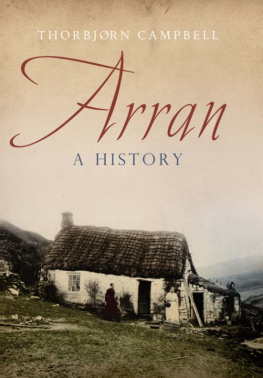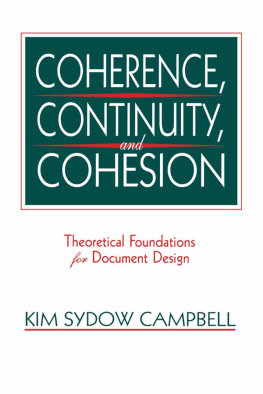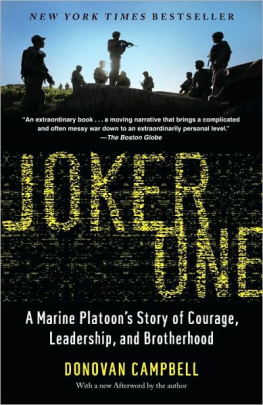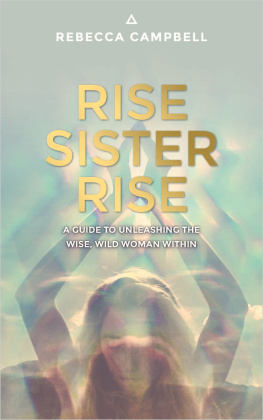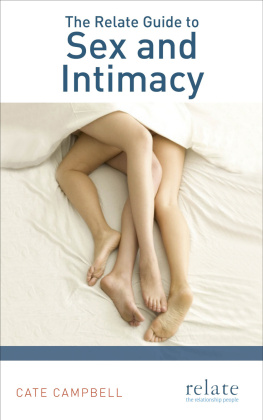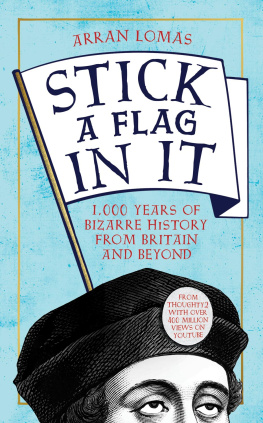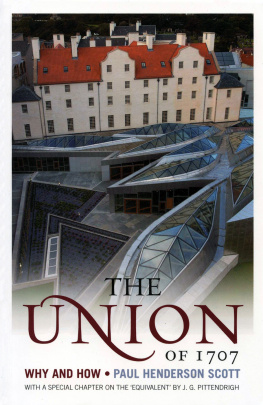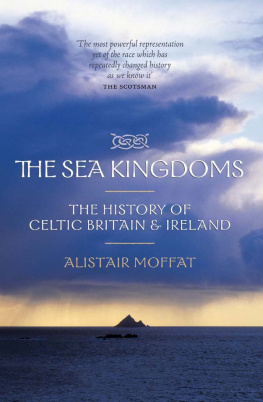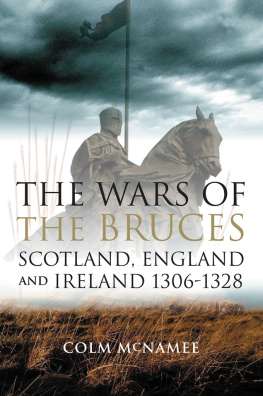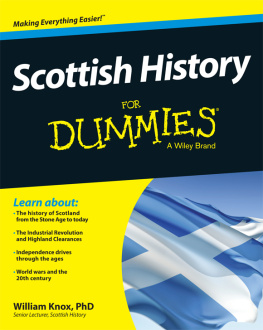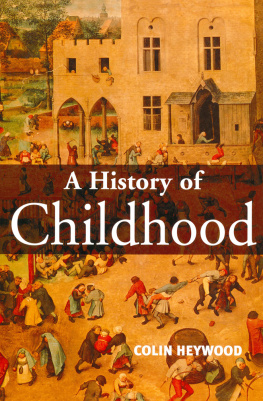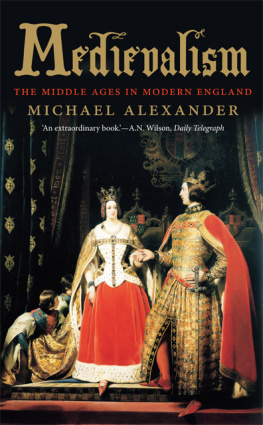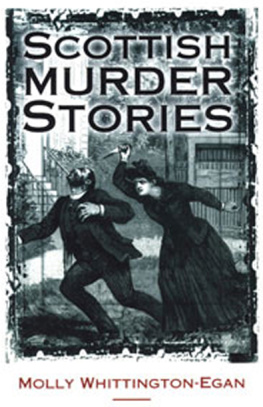Arran
A History

This eBook edition published in 2013 by
Birlinn Limited
West Newington House
Newington Road
Edinburgh
EH9 1QS
www.birlinn.co.uk
This edition first published in 2013 by Birlinn Limited
Copyright K.T.S. Campbell 2007, 2013
The moral right of K.T.S. Campbell to be identified as the author of this work has been asserted by him in accordance with the Copyright, Designs and Patents Act 1988.
All rights reserved. No part of this publication may be reproduced, stored or transmitted in any form without the express written permission of the publisher.
eBook ISBN: 978-0-85790-590-1
Print ISBN: 978-1-78027-110-1
British Library Cataloguing-in-Publication Data
A catalogue record for this book is available from the British Library
Version 1.0
I.M.
Gladys Srivastava
List of Illustrations
Introduction
I first became conscious of Arran as a wee boy, paddling on the Ayr foreshore with the then (late 30s) obligatory bucket and spade. The islands sharp profile remained in my mind, but my impressions were easily confused at that stage and I mixed Arran up with Ireland, and later, during the war, with Canadia where the Canadians came from. (I was staggered, quite recently, to discover the same confusion in the mind of a grown woman, also a long-term resident of Ayr; this, in the age of mass popular tourism in Scotland, is one of the reasons why I thought Id better write this book for the better information of my fellow citizens.)
There is a long-standing Ayr joke to the effect that if you can see Arran it has either just been raining or is about to rain, and if you cant see Arran, it is raining. Certainly both Arran and its satellite Holy Island often disappear entirely under heavy cloud which made me think of the legends of vanishing or floating islands, like the sacred island of Delos, alleged to be secured to the floor of the Aegean sea only by a golden chain. At night, too, when I took a lonely stroll along the Promenade, a light would glow out from Pladda or Holy Island, or there was a strip of red sunset under the western clouds, almost like a grin from south to north, belonging to some colossal devil which had Goatfell as a fang, the rest of the countenance masked. I would shiver and hurry home.
So much for childish imagination. Yet, a supernatural aura certainly seems to linger on Arran: I fancy you can feel it when you stand alone on the bleak plain of Machrie in the frowning presence of the giant megalithic ruins. They .
To go by the great numbers of standing stones, stone circles, rock carvings (cup-and-ring) and chambered tombs on Arran, it has almost certainly been a sacred island, a place of concentrated holiness in which the presence of the gods is almost palpable. People would fall to their knees and worship in adoration and fear.
The same people that erected the stone temples of Machrie 4,000 years ago also grew corn and herded cattle, lit fires, built houses, lived, gave birth and died and ignorantly farmed the soil to exhaustion, destroyed the once-luxuriant forests, and covered Arran in sterilizing peat in which nothing would grow. It was probably the bloodthirsty Vikings, three to four thousand years after the Megalithic times, who revived Arran as an agricultural entity, with improved methods of soil management and cultivation. Another eight hundred years elapsed before the Agricultural Revolution arrived, heralded by the indefatigable reformer John Burrel, whose preoccupation with efficiency and productivity blinded him to the human costs of reorganizing the traditional systems of landholding. The new broom led to the traumas of Clearances, emigration and pauperization of great numbers of the countryfolk of Arran. Yet, although the efforts of Burrel and his followers succeeded in raising agriculture from the condition of mere subsistence-farming to that of relatively profitable industry, the importance of agriculture itself began to dwindle, and Arran today earns more from tourism than it does from farming.
Besides the tortured historical course of the islands agriculture, Arran politics has always followed a painful path of repeated transformations, with linguistic and cultural shifts, quarrels of ownership and nationality, and devastation after devastation by the armed men of different factions.
I do not claim that this book is a work of profound scholarship or original research (despite the number of references listed in its pages). For instance, I have not plumbed the depths of the Hamilton family archives, and many secrets therein await unlocking. I have, however, trawled many existing authorities and learned journals, and have kept in mind a primary objective, to facilitate public access to sources no longer in print or contained in journals with a circulation confined to scholars. In particular I have depended heavily upon the works of two past biographers of Arran, William Mackenzie and Robert McLellan, neither now in print. The fruits of their work, together with that of others, should be preserved and renewed for the twenty first century.
I owe much to my great predecessor, William Mackenzie, author of the second volume of The Book of Arran (1914). Since his time conditions in Arran have changed radically, probably beyond his wildest imagination. The two major wars of the twentieth century have fatally undermined the basis of civilization in Arran as everywhere else. Apparently solid foundations have been knocked away and the whole cultural structure is in imminent danger of collapse. Language, folk-songs and folk-stories have vanished like snow off a dyke. The ancient Arran dialect of Gaelic was last heard about 1950, and the custom of story-telling bed-time stories and old wives tales has withered irretrievably. Belief in the supernatural has simply disappeared. Folk-song has given way to the barbaric yawp of the pop-song.
The more precious, then, are the survivals, or the recorded echoes, of genuine folk culture. It was perhaps pure chance, a stroke of great good fortune, that led Mackenzie to make a collection of the folk-songs and folk-stories that he still found current in the original Gaelic dialect, spoken by old people, in the Edwardian twilight before the Great War. He published them as the two final chapters of his Book of Arran together with translations, having had them checked over for dialect-linguistic authenticity by competent scholars. These pieces are of inestimable value to both philology and history. However, the two volumes of The Book of Arran themselves are rare and expensive finds, long out of print even the 1982 reprint. The best tribute that I could make to Mackenzie is to make these folkloric survivals available once again to a wider public. A fair number of them now appear in two appendices at the end of this volume. For permission to reproduce I must thank the Arran Society of Glasgow and their Honorary Secretary, Miss Nan Murchieand, for reviewing Mackenzies Gaelic (I have none), Dr R.D. Whitla of Lamlash.
I must also thank Edinburgh University Press and Messrs Edwards and Ralston for permission to reproduce in this work the clear and succinct tabular guide to the current systems of carbon-fourteen dating and notation appearing on this of their invaluable Scotland After the Ice Age. Similarly my gratitude must be expressed to the Society of Antiquaries of Scotland for permission to reproduce one of Dr Alison Haggertys diagrams of the timber monument in her article Machrie Moor, Arran: recent excavations at two stone circles (PSAS vol. 121 5194).

